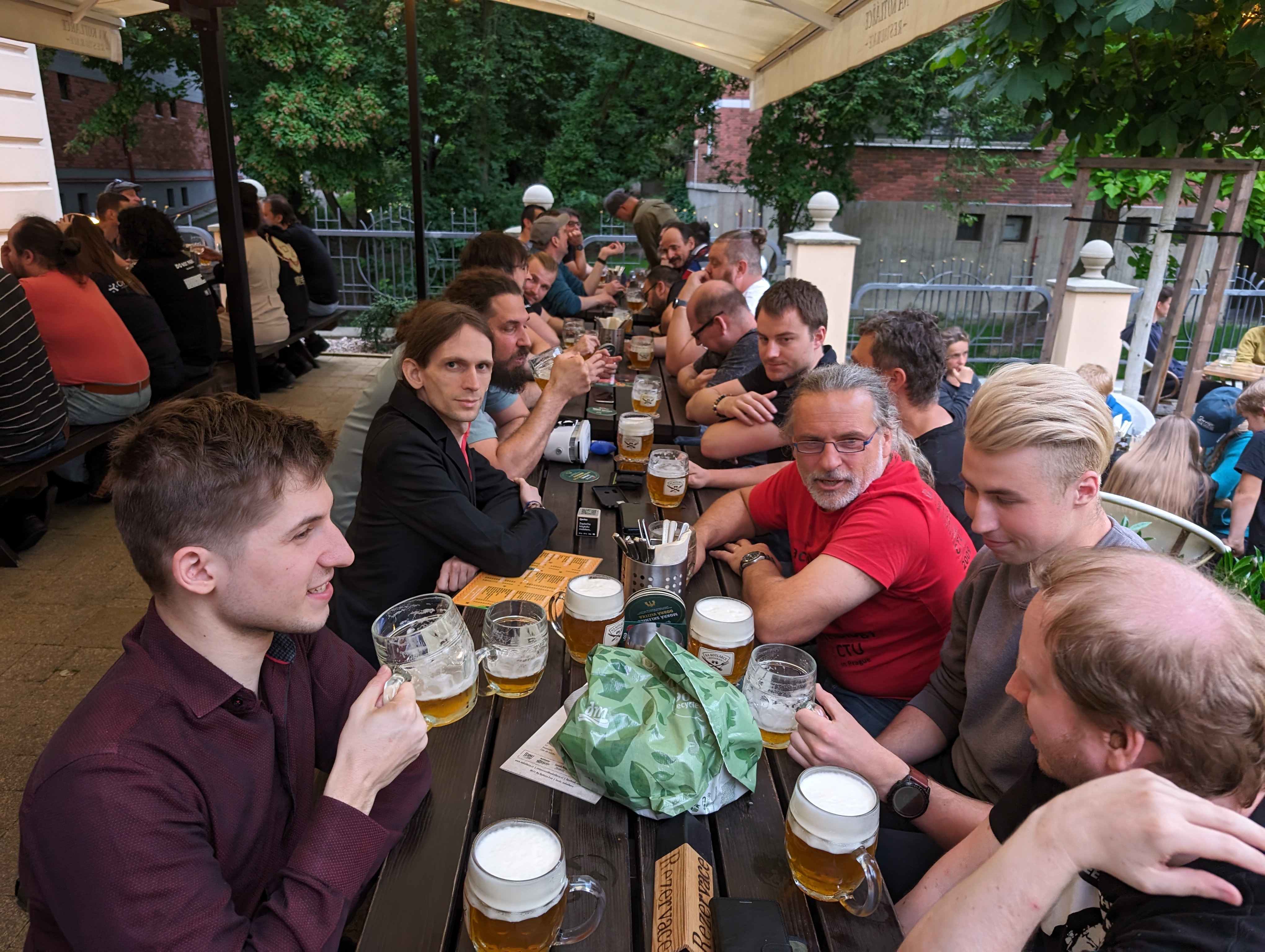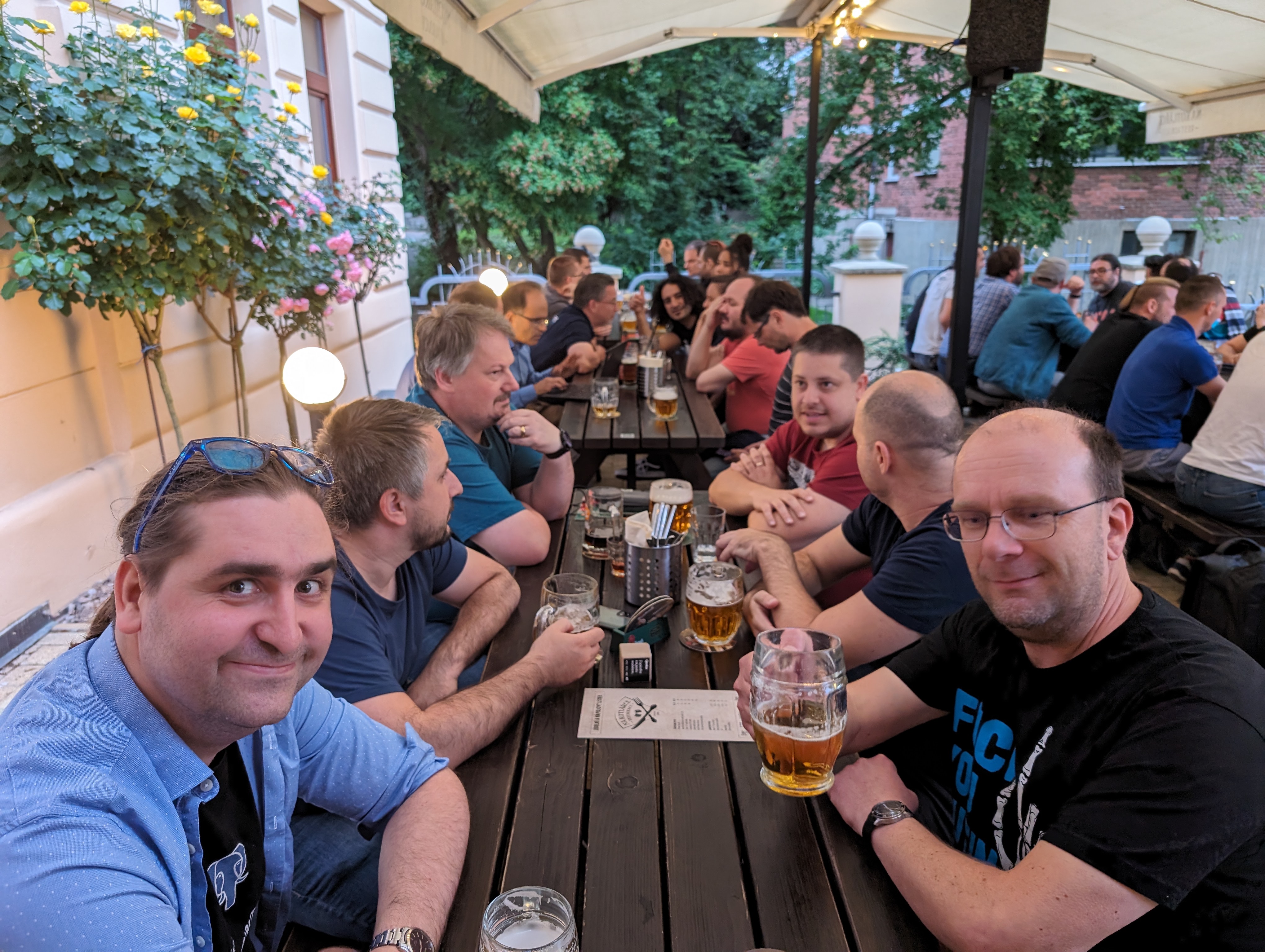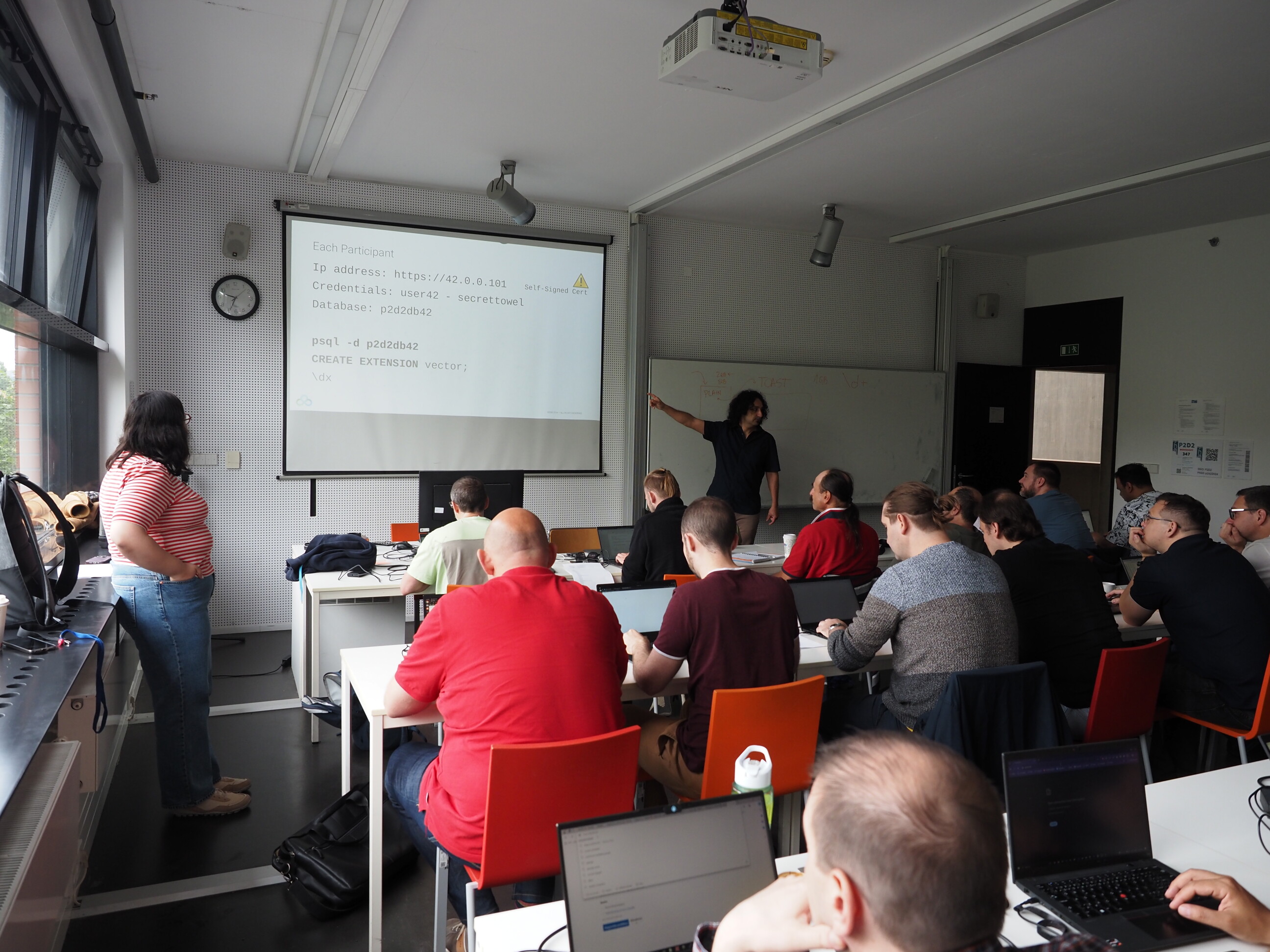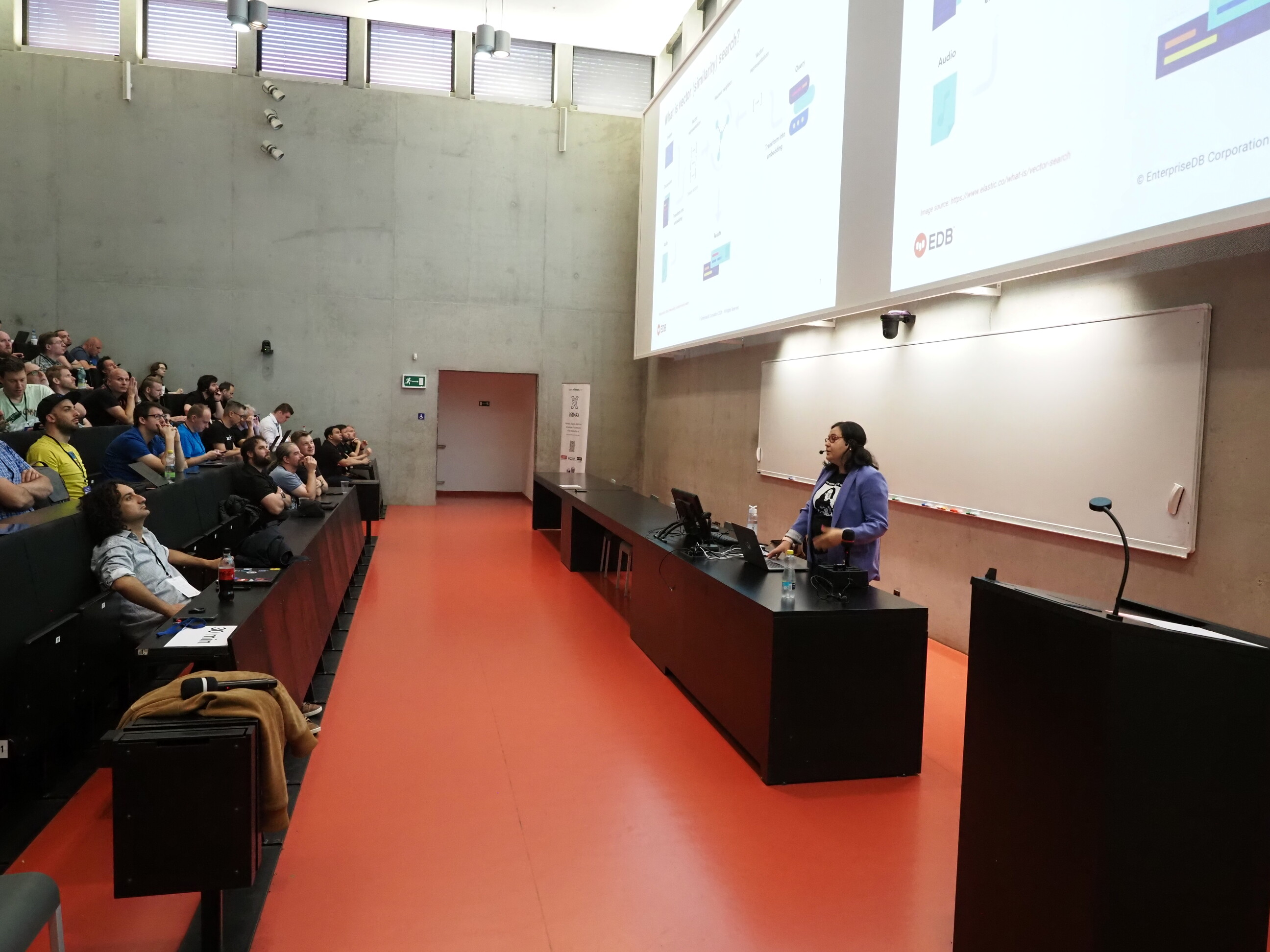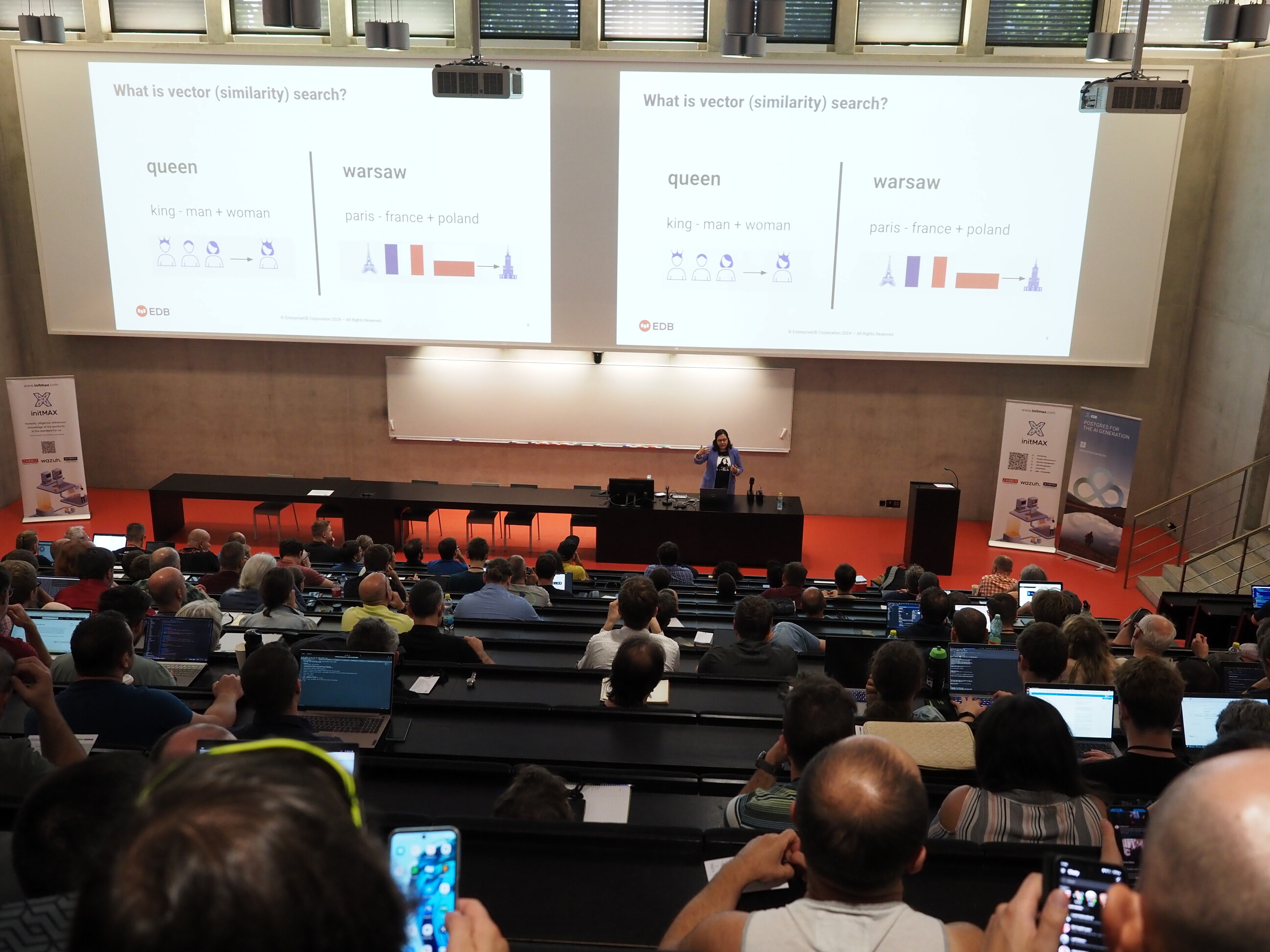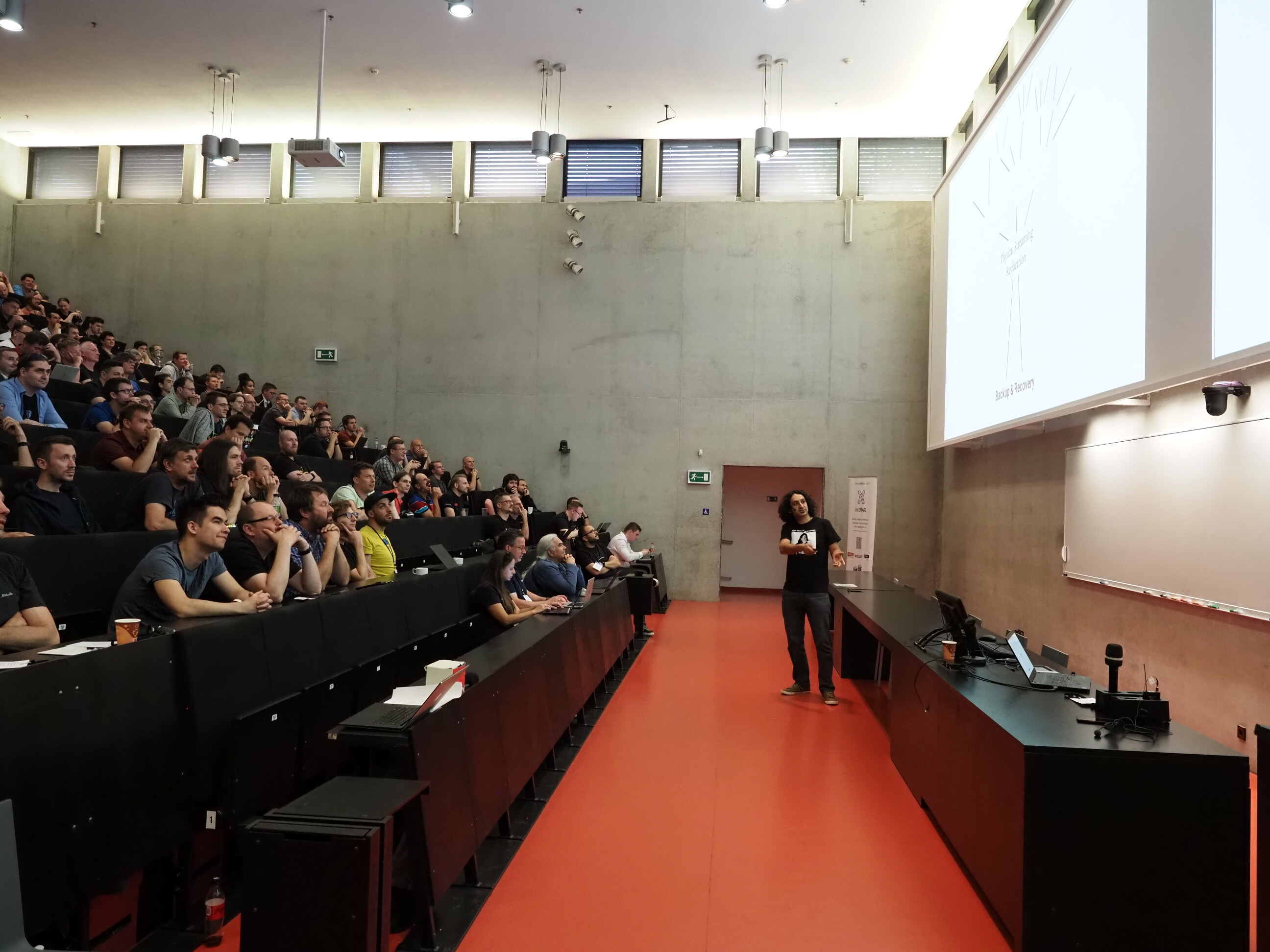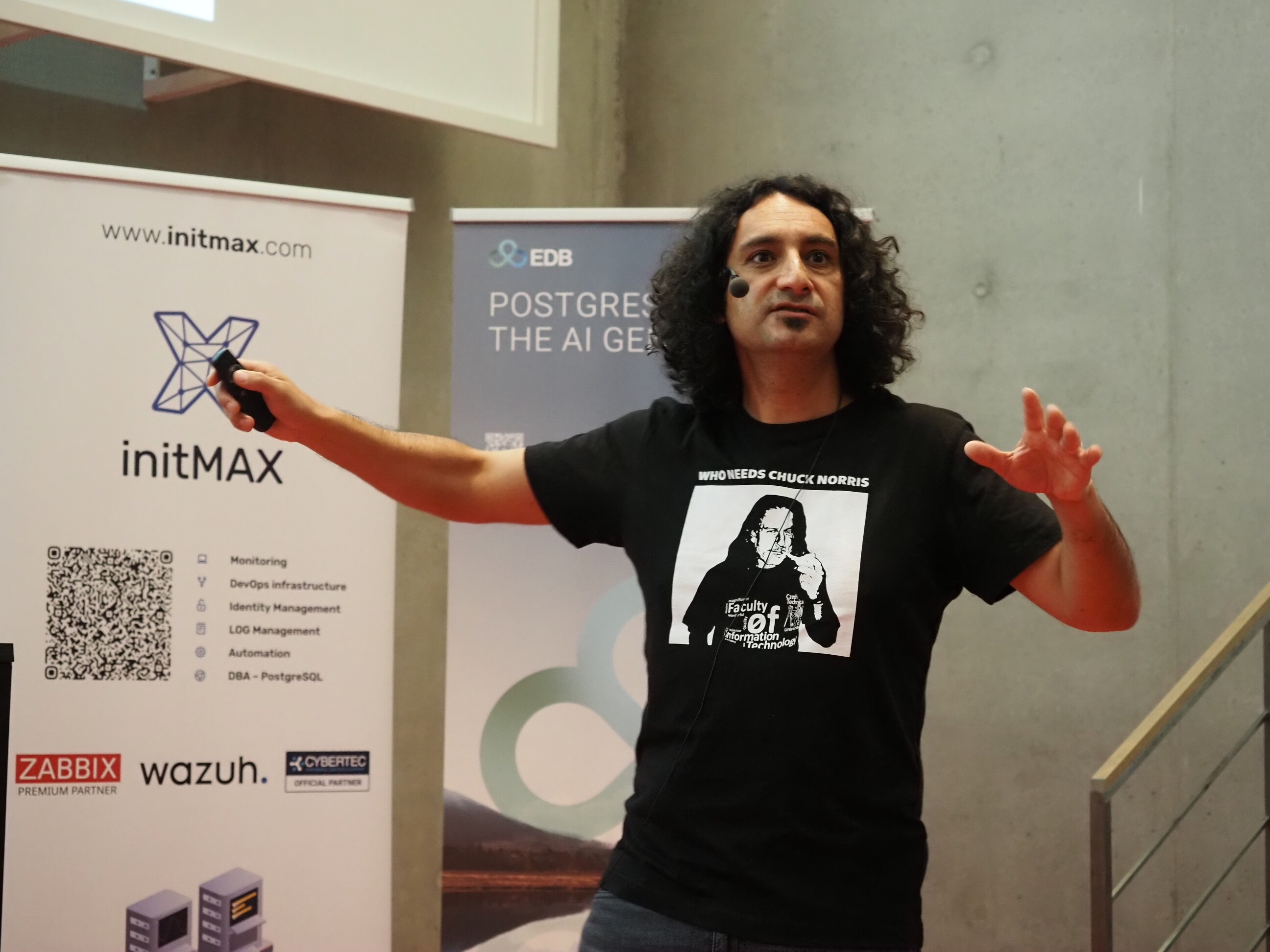The sixteenth year of the Prague PostgreSQL Developer Day (P2D2) conference, organized by the local PUG, happened on June 4-5. This year EDB was one of the main sponsors of the event, so let us share a brief summary from the conference overall, and a bit more details about contributions by EDB speakers.
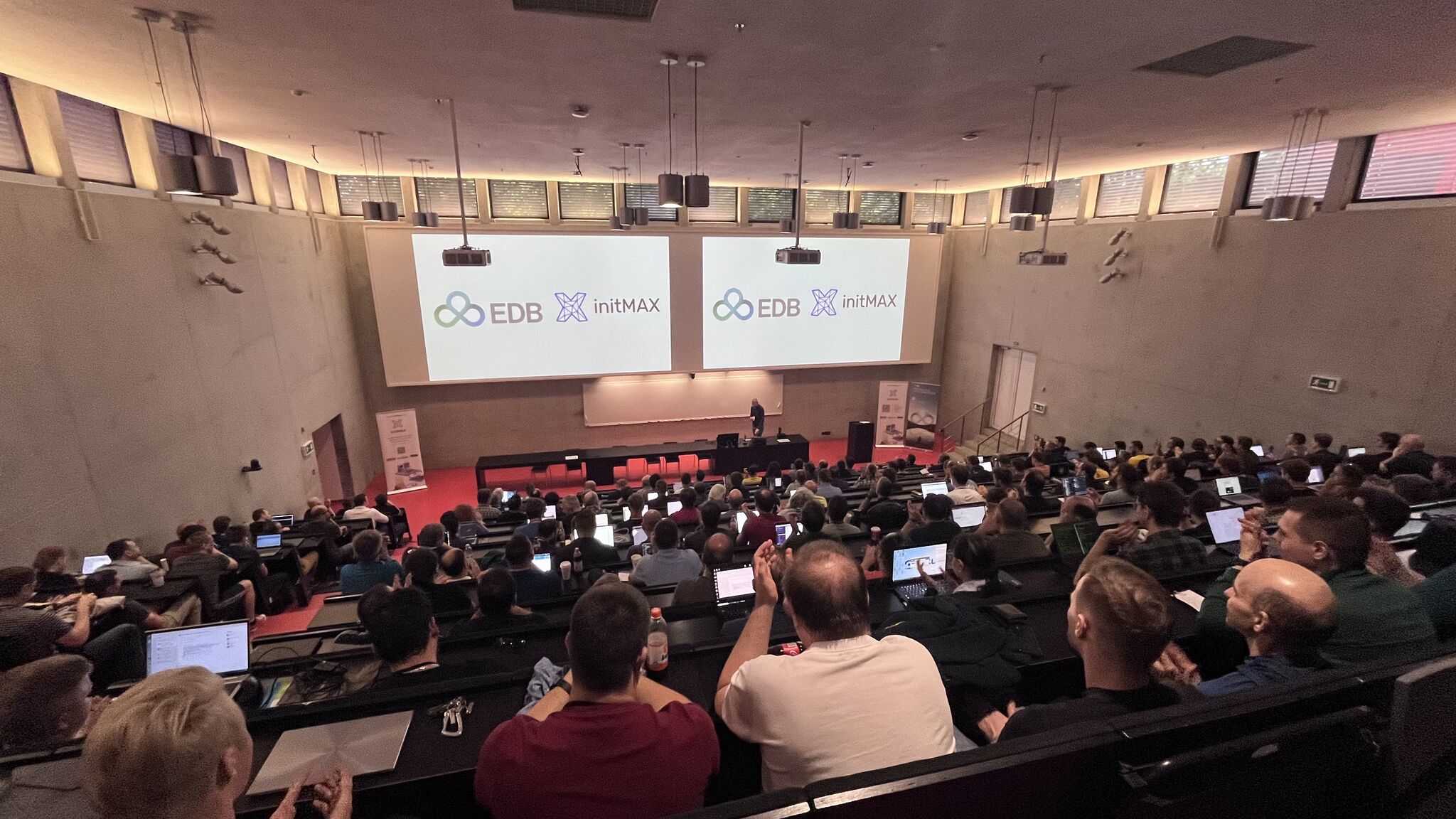
P2D2 is a two-day conference, with half-day workshops on the first day, and a single track of regular 45-minute talks on the second day. This is the format for the past couple years, but due to the growth and interest it seems likely the event will expand to accommodate more talks, possibly by switching to multiple tracks. This year, the conference was attended by about 250 registered attendees.
The conference happens at FIT CVUT - a university department of computer science. The building is very new, and it has great rooms of various sizes, a perfect fit for an event like this. And the date of the conference is picked to be in the exams period, which means there’s plenty of room even for an event of this size.
Day 1: Workshops
The first day is about half-day workshops - this year there were four in total, two of them by EDB employees. The first one was about “PostgreSQL as a vector database” by Boriss Mejias and Gulcin Yildirim Jelinek, the second one about “PostgreSQL tuning basics” by Tomas Vondra. The two other workshops were about logical replication and using pgbackrest to do backups, both by Ales Zeleny, a local PUG member (and co-organizer of the event).
The workshop about PG as a vector database turned out to be very popular and well received. We’ve heard this feedback in this sense from multiple attendees on the second day.
Workshops in general are very popular and well attended - the capacity is fairly limited (25 people per training), to fit into smaller lecture rooms and allow proper discussion etc. It usually takes only a couple days to sell out (a week at most), and some of the workshops happen in the past already - e.g. both the logical replication and PostgreSQL tuning are reruns.
Day 2: Talks
The second day is about regular talks, 45 minutes each. This year there were 8 talks on the schedule:
- Just don’t do it – Databases in Kubernetes (Jan Karremans / Cybertec)
- Enterprise solution in PostgreSQL: efficient and flexible access control (Jakub Zemanek / initMAX)
- Bringing vectors to PostgreSQL with pgvector (Gülçin Yıldırım Jelínek / EDB)
- BTREE, GIN and BTREE_GIN indexes on JSONB data (Josef Machytka / NetApp)
- Understanding Consistency in PostgreSQL Replication (Boriss Mejías / EDB)
- Approaches to query optimization - from cost-based optimization to JIT (Pavel Stěhule)
- When it all GOes right (Pavlo Golub / Cybertec)
- pg_stat_monitoring (Aleš Zelený)
This was a good mix of topics from different areas, with speakers from various companies etc. Based on the feedback report published by the organizers, the schedule was exceptionally well received - both in terms of the topics selection, and also how the talks went.
You can find more details about each of the talks, including abstracts and PDF slides at the conference website. Let’s look at the talks given by speakers from EDB.
Bringing vectors to PostgreSQL with pgvector
(Gülçin Yıldırım Jelínek / EDB)
In the first talk, Gülçin explained the basics of using PostgreSQL to store and process vector data, using the pgvector extension. PostgreSQL does not have a native data type to store vectors, but this is a nice showcase of the extensibility, which allows adding powerful vector capabilities while still leveraging all other PostgreSQL strengths.
The 45-minute talk is a nice introduction into using vector data type, overview of index types provided by the pgvector extension (ivfflat, hnsw) and the basic steps of processing embeddings.
There is much more to say about this broad topic, which simply cannot be covered in the 45 minutes allocated for the talk. For more details, please check out the original blog post where the talk was derived and another blog post showcasing an advanced use of Postgres and pgvector for building a RAG application.
Understanding Consistency in PostgreSQL Replication
(Boriss Mejías / EDB)
In the second talk, Boriss set out to explain how the various replication modes available in PostgreSQL affect the consistency observed by the users - but he did that in a truly unique and amazingly entertaining way, by telling stories about a metal music festival and so on. We’ve heard a lot of praise about this talk during the rest of the conference - it was a great showcase of how important presentation skills are.
Boriss is a regular speaker at various PostgreSQL conferences. You can also watch the talk he recently gave at pgconf.eu and posette 2024, or one of his lightning talks.
Post-conference social event
Of course, a conference is not just about listening to talks - people also come because of the opportunity to talk to other people about Postgres stuff (but not only that), to meet former colleagues and old friends, or even to make some new friends.
The Prague conference accommodates this by organizing two social events - an informal cocktail party (with a selection of drinks and small snacks) right after closing the talks, where people can walk around, chat to other attendees and/or organizers, and so on. This is a relatively new thing in the history of the conference (it was introduced about 3 years ago), but it seems most attendees choose to participate and enjoy this type of event.
After the cocktail party ends, an even less formal social event begins - all interested attendees move to a nearby restaurant, and have a nice dinner, perhaps a beer (we’re in Prague, after all). This is a great opportunity to continue discussing the talks, talk to the speakers.
